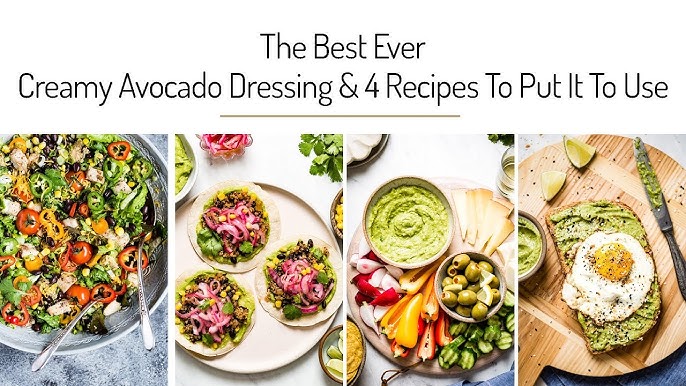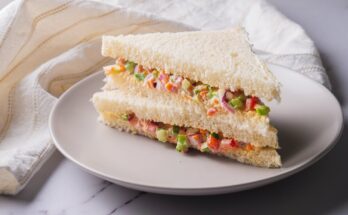Dressing Recipe: Homemade dressings elevate any dish to restaurant-quality levels without breaking the bank. Whether you’re crafting a fresh salad or looking for a dip for your favorite veggies, the perfect dressing is the key to flavor heaven.
Why Make Your Own Dressing?
Making your own dressing is not just cost-effective—it gives you full control over the flavors, ingredients, and nutritional value. Store-bought dressings often contain artificial preservatives, excessive sugar, and unhealthy fats. By whipping up your own, you can tailor it to your preferences and dietary needs.
Basic Ingredients You’ll Need
Most dressings start with a few core ingredients. Here’s a quick breakdown:
- Oil: Olive oil, avocado oil, or vegetable oil are common choices.
- Acid: Vinegar (balsamic, apple cider, white wine) or citrus juice.
- Emulsifiers: Mustard or honey helps blend oil and vinegar seamlessly.
- Seasonings: Salt, pepper, garlic, and herbs for a boost of flavor.
Essential Tools for Making Dressings
Kitchen Tools for Easy Preparation
Making a dressing is simple with the right tools. Keep these on hand:
- Whisk: For mixing and emulsifying ingredients.
- Mason Jar or Salad Dressing Shaker: Perfect for shaking ingredients together.
- Measuring Spoons and Cups: To ensure precise ratios.
- Blender or Food Processor: Ideal for creamy or herb-based dressings.
Tips for Proper Storage
Storing your dressing correctly is crucial to maintaining freshness. Use airtight containers and refrigerate promptly. Glass jars work best as they prevent flavor absorption and are easy to clean.
Types of Dressings and Their Uses
Vinaigrettes
Vinaigrettes are light and tangy, perfect for leafy greens or roasted vegetables. Popular options include balsamic, red wine, and lemon vinaigrettes.
Creamy Dressings
Creamy dressings, like ranch or Caesar, add richness and are ideal for hearty salads, dips, or sandwich spreads.
Specialty Dressings
Think outside the box with Asian sesame dressing, chimichurri, or herb-based options. These pair well with grains, meats, and even as marinades.
Step-by-Step Dressing Recipes
Classic Vinaigrette
Ingredients
- 3 tablespoons olive oil
- 1 tablespoon balsamic vinegar
- 1 teaspoon Dijon mustard
- 1 teaspoon honey
- Pinch of salt and pepper
Instructions
- In a bowl, whisk together vinegar, mustard, and honey.
- Slowly drizzle in olive oil while whisking continuously to emulsify.
- Add salt and pepper to taste, adjusting flavors as needed.
- Use immediately or refrigerate for up to one week.
Creamy Ranch Dressing
Ingredients
- ½ cup mayonnaise
- ¼ cup sour cream
- 1 tablespoon buttermilk
- 1 teaspoon garlic powder
- 1 teaspoon dried dill
- Salt and pepper to taste
Instructions
- Combine mayonnaise, sour cream, and buttermilk in a bowl.
- Stir in garlic powder, dill, salt, and pepper.
- Mix until smooth and creamy.
- Refrigerate for at least 30 minutes before serving.
Honey Mustard Dressing
Ingredients
- 3 tablespoons Dijon mustard
- 2 tablespoons honey
- 2 tablespoons apple cider vinegar
- 3 tablespoons olive oil
Instructions
- Whisk mustard, honey, and vinegar in a bowl until combined.
- Slowly add olive oil, whisking to create a smooth consistency.
- Taste and adjust sweetness or tanginess as preferred.
- Store in the refrigerator for up to a week.
Customizing Your Dressing
Adjusting Flavor Profiles
The beauty of making your own dressings is the ability to tweak flavors to suit your palate. Here’s how:
- Too tangy? Add a bit more oil, a dash of sugar, or honey to balance the acidity.
- Too bland? Try adding a pinch of salt, pepper, or spices like paprika or cumin.
- Too thick? Thin it out with a splash of water, milk, or extra vinegar.
- Too runny? Incorporate an emulsifier like mustard or yogurt for a thicker consistency.
Experiment with herbs like parsley, basil, or cilantro to bring a fresh, aromatic touch.
Substitutions for Dietary Needs
Catering to specific dietary restrictions? Here are some easy swaps:
- For vegans: Replace honey with agave syrup or maple syrup. Use plant-based yogurt for creamy dressings.
- For low-fat diets: Opt for low-fat yogurt or reduce the oil content, replacing it with vegetable broth.
- For dairy-free diets: Use coconut cream or cashew milk instead of buttermilk or sour cream.
Tips for Serving and Pairing Dressings
Best Salads for Each Dressing
Pairing the right dressing with your salad can transform a simple dish into a masterpiece. Here’s a guide:
- Vinaigrettes: Ideal for green salads, roasted vegetables, and grain bowls.
- Creamy Dressings: Perfect for wedge salads, coleslaw, or as dips for chicken wings.
- Specialty Dressings: Use Asian sesame for noodle salads or chimichurri for grilled meats.
Non-Salad Uses for Dressings
Dressings aren’t just for salads! Here are some creative uses:
- Marinades: Use vinaigrettes or herb-based dressings to marinate chicken, fish, or tofu.
- Dips: Pair creamy dressings with veggie sticks, chips, or breadsticks.
- Toppings: Drizzle over baked potatoes, roasted veggies, or even pizza for an extra punch of flavor.
Storing and Preserving Homemade Dressings
How Long Do They Last?
Most homemade dressings last about 5-7 days in the refrigerator, though the exact duration depends on the ingredients used. Vinaigrettes typically last longer than creamy dressings due to the absence of perishable dairy.
Tips for Freshness
- Always store dressings in airtight containers, preferably glass jars.
- Label each jar with the preparation date to avoid confusion.
- If the dressing separates or thickens in the fridge, simply shake or whisk it back to its original consistency before serving.
Common Mistakes to Avoid
Overdressing the Salad
A common pitfall is drowning your salad in dressing, which can make it soggy and overpower the flavors. Always start with a small amount and toss the salad well. Add more dressing if needed.
Balancing Flavors Correctly
Achieving the perfect balance between acidity, sweetness, saltiness, and richness is essential. Here are some tips:
- Taste frequently as you mix ingredients.
- Remember, it’s easier to add more ingredients than to fix an overly salty or tangy dressing.
FAQs about Dressing Recipe
1. What is dressing in cooking?
Dressing refers to a flavorful mixture used to enhance salads, vegetables, or other dishes. Commonly made with ingredients like oil, vinegar, herbs, and spices, it can be creamy or vinaigrette-style.
2. What are the main ingredients in a classic dressing recipe?
A basic dressing typically includes oil (such as olive oil), an acid (like vinegar or lemon juice), and seasonings (salt, pepper, herbs, or garlic). Creamy dressings may add ingredients like yogurt, mayonnaise, or buttermilk.
3. How can I make my dressing thicker?
To thicken dressing, you can add yogurt, mayonnaise, or even a touch of honey or mustard. Blending in avocado or pureed vegetables is also a great option for added texture and flavor.
4. What are some healthy alternatives for traditional dressings?
For healthier options, use low-fat yogurt, avocado, or tahini as a base. Replace sugar with honey or maple syrup and choose extra virgin olive oil for a lighter fat source.
5. How long can homemade dressing be stored?
Most homemade dressings last 3–7 days when stored in an airtight container in the refrigerator. Dressings with fresh ingredients like herbs or dairy should be consumed within 3 days.
6. Can I customize dressing recipes?
Absolutely! Dressing recipes are highly versatile. Experiment with your favorite herbs, spices, or sweeteners to create a personalized flavor.
Conclusion
Crafting your own dressing brings unparalleled freshness and flavor to your meals. It’s an opportunity to experiment with ingredients, ensuring healthier, tastier, and preservative-free options for your dishes.
Don’t be afraid to play around with ingredients! The best recipes are born from trial and error. Start with the basics and soon, you’ll be whipping up gourmet dressings that rival any store-bought version.



